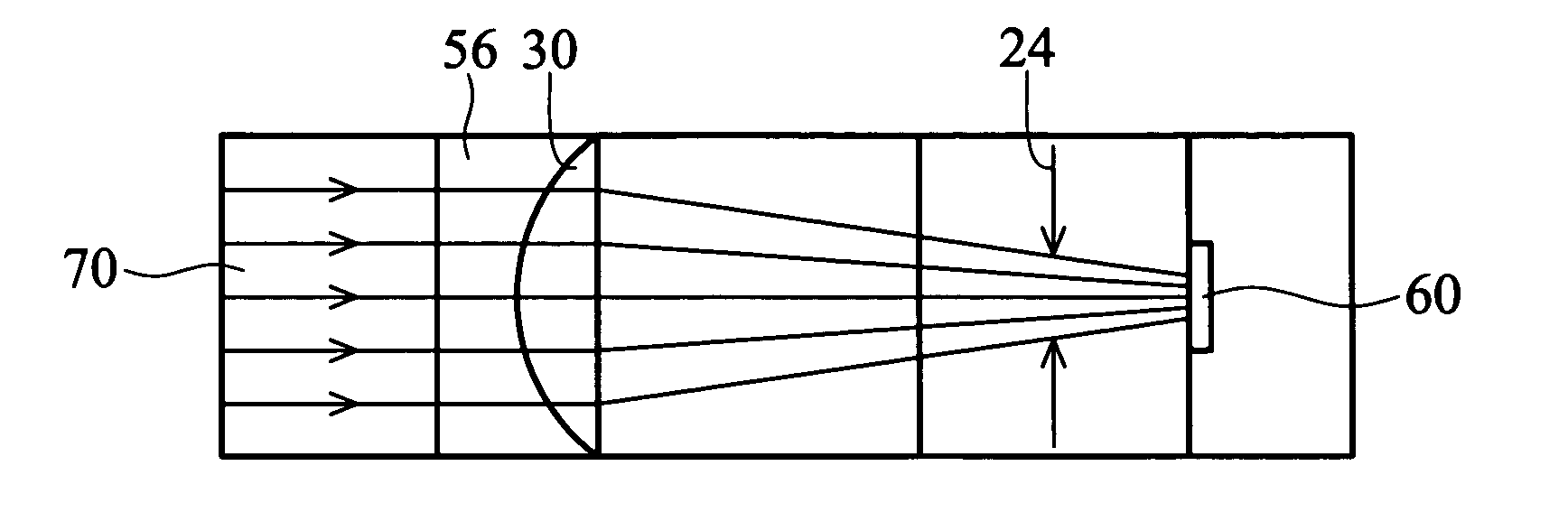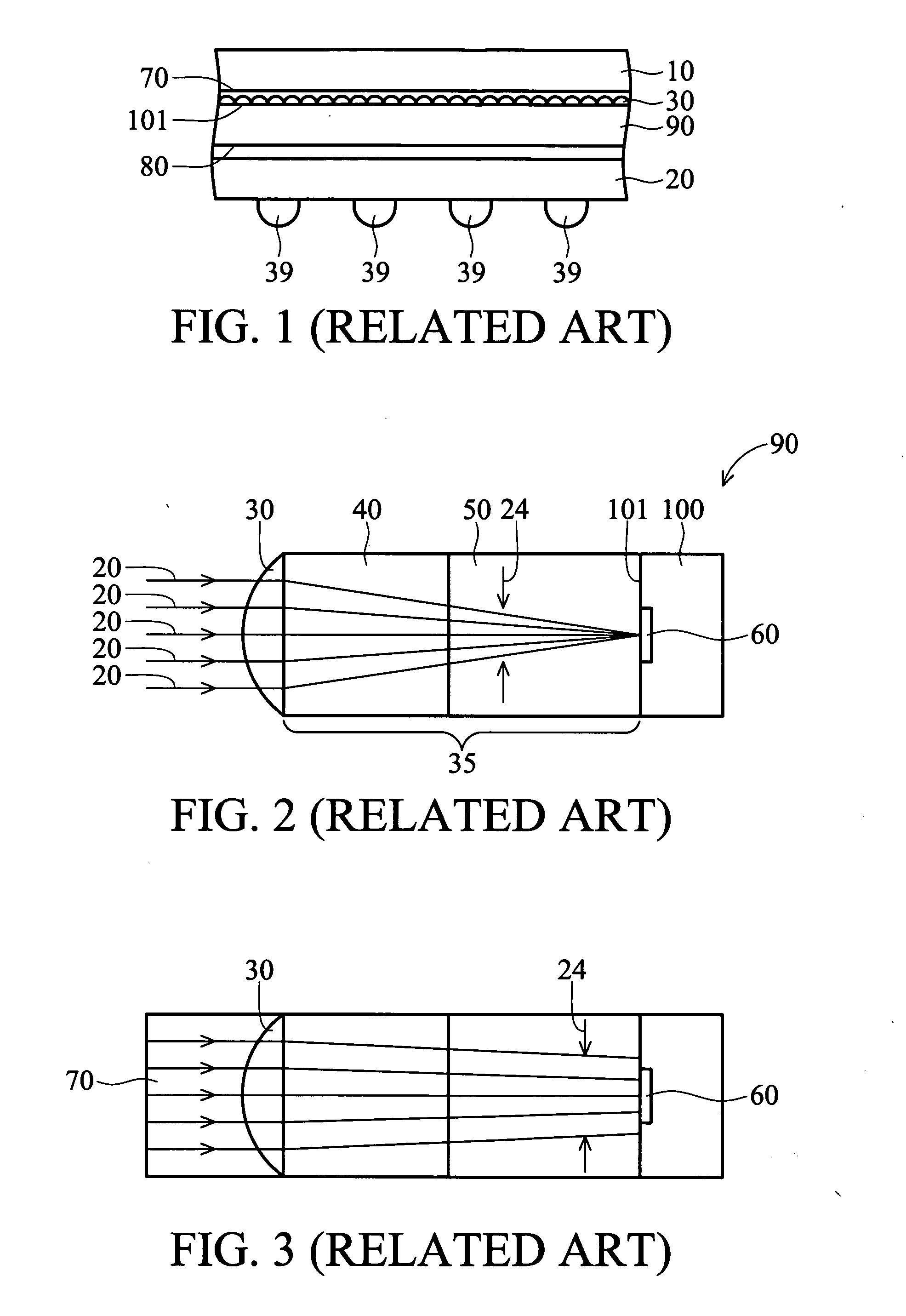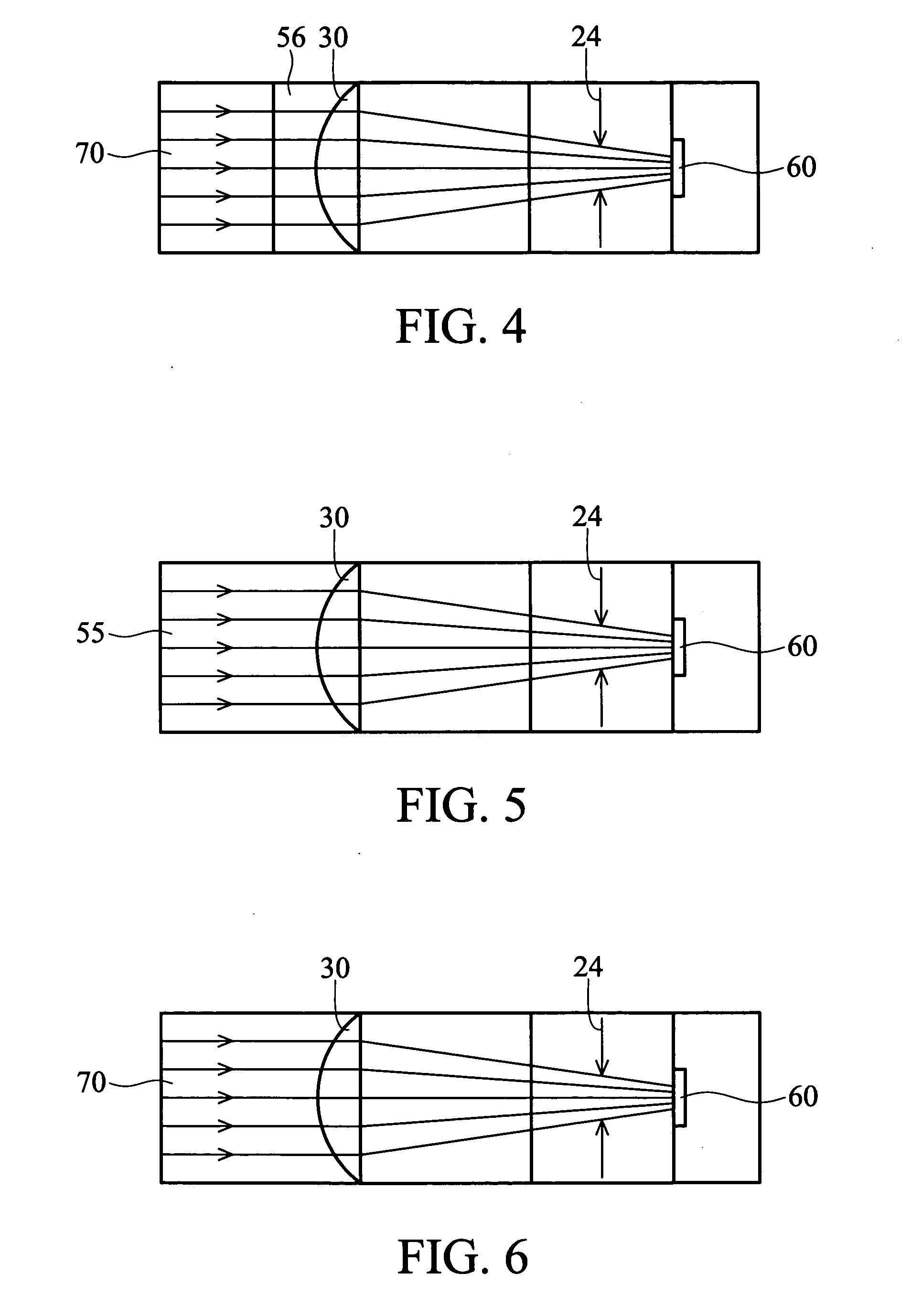Process to improve image sensor sensitivity
a technology of image sensor and process, applied in the field of image sensor and packaging methods thereof, can solve the problems of inability to achieve the desired optical properties of image sensors, inability to achieve the desired optical properties, etc., to achieve the effect of improving the sensitivity of the sensor
- Summary
- Abstract
- Description
- Claims
- Application Information
AI Technical Summary
Benefits of technology
Problems solved by technology
Method used
Image
Examples
first embodiment
Referring next to FIG. 4, the packaging method of the present invention is shown, wherein an additional intermediate optically refractive layer (56) with nI<nB is formed between the microlens (30) and the bonding layer (70). For example, while the bonding layer of epoxy has nB=1.5, the additional intermediate optically refractive layer (56) has nI<1.5, where nI between approximately 1.33 and 1.45 is preferred. This additional intermediate optically refractive layer (56) has the characteristics of high transmittance (>90%, greater than 95% is preferred), thermal resistance, chemical resistance and viscosity greater than 5 mpas (greater than 10 mpas is preferred), and can be a layer of material such as [A] a mixture including Fluororesin derivative, Initatoe, Methylisobutylketone (MIBK), and t-butanol, or [B] a mixture including Fluororesin derivative, Initatoe, Melamine resin, Methylisobutylketone (MIBK), t-butanol, formed to a thickness higher than microlens (30), approxim...
third embodiment
Referring finally to FIG. 6, there is shown in cross-sectional schematic form, the present invention wherein the microlens (30) is now formed of a transparent material having an index of refraction nL satisfying nL−nB greater than 0.2. For example, the epoxy layer (70) has an index of refraction nB approximately 1.5, and the index of refraction nL of the microlenses (30) is greater than 1.7, with a range between 1.73 and 1.8 being preferred.
PUM
 Login to View More
Login to View More Abstract
Description
Claims
Application Information
 Login to View More
Login to View More - R&D
- Intellectual Property
- Life Sciences
- Materials
- Tech Scout
- Unparalleled Data Quality
- Higher Quality Content
- 60% Fewer Hallucinations
Browse by: Latest US Patents, China's latest patents, Technical Efficacy Thesaurus, Application Domain, Technology Topic, Popular Technical Reports.
© 2025 PatSnap. All rights reserved.Legal|Privacy policy|Modern Slavery Act Transparency Statement|Sitemap|About US| Contact US: help@patsnap.com



